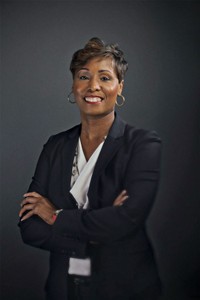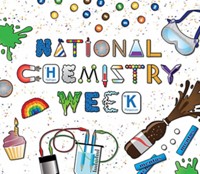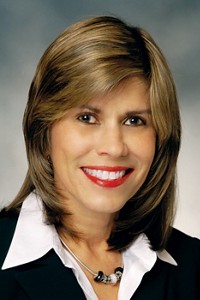Advertisement
Grab your lab coat. Let's get started
Welcome!
Welcome!
Create an account below to get 6 C&EN articles per month, receive newsletters and more - all free.
It seems this is your first time logging in online. Please enter the following information to continue.
As an ACS member you automatically get access to this site. All we need is few more details to create your reading experience.
Not you? Sign in with a different account.
Not you? Sign in with a different account.
ERROR 1
ERROR 1
ERROR 2
ERROR 2
ERROR 2
ERROR 2
ERROR 2
Password and Confirm password must match.
If you have an ACS member number, please enter it here so we can link this account to your membership. (optional)
ERROR 2
ACS values your privacy. By submitting your information, you are gaining access to C&EN and subscribing to our weekly newsletter. We use the information you provide to make your reading experience better, and we will never sell your data to third party members.
Education
Solar Road Trip
Project iLASER engages Hispanic students in hands-on activities
by Linda Wang
December 6, 2011
| A version of this story appeared in
Volume 89, Issue 49
This past September, in celebration of the International Year of Chemistry, David R. Brown packed the back of a U-Haul truck with supplies for activities in light and solar energy. He embarked on a monthlong road trip to do outreach with elementary school children living along the 2,000-mile stretch of the U.S.-Mexico border from California to Texas. Brown, a chemistry professor at Southwestern College, in Chula Vista, Calif., visited elementary schools and Boys & Girls Clubs near border crossing points, where Hispanic communities are concentrated.
Teaching at a two-year college just 8 miles from the U.S.-Mexico border, Brown understands the challenges that Hispanic students can face in the science, technology, engineering, and mathematics (STEM) fields. The Hispanic population “is the fastest growing and perhaps the least engaged in STEM,” Brown says. “That combination instills in me a sense of urgency to do something.”
Hispanics continue to be underrepresented in STEM fields. According to a September 2011 report from the U.S. Department of Commerce’s Economics & Statistics Administration, Hispanics have accounted for most of the increase in the overall U.S. workforce since 2000; the percentage of Hispanics in the U.S. workforce increased from 10% in 2000 to 14% in 2009. Yet the percentage of Hispanics in the STEM workforce rose by only 1%—from 5% in 2000 to 6% in 2009.
Through Project iLASER (investigations with Light & Sustainable Energy Resources), which is supported by a $150,000 grant from the National Science Foundation, Brown hopes to inspire more Hispanic students to enter STEM fields. “I think the more diverse the group of folks who are out there solving problems, the better the solutions that are going to come along,” he says.
In September, students participated in hands-on activities such as building and testing dye-sensitized solar cells and learned about the properties of light. Brown says he centered his outreach activities on light and solar energy because he wanted to expose the students to real-life problems.

Ludivina Avila, a chemistry professor at South Texas College, in McAllen, who assists in some of the iLASER activities, says she hopes the project has an impact on these students’ lives. If the program gives young children an awareness and excitement about science, “then maybe they’ll continue to want to study science when they get to high school and college,” she says.
As a Caucasian male, Brown acknowledges that he can’t serve as a culturally relevant role model for the students that he works with, but he does have personal experience with how education can change a person’s life. Raised in the 1960s by a single mother, Brown came from blue-collar roots. Brown’s mother was a nurse at a hospital in East St. Louis, Ill. His grandfather, a steelworker, served as a father figure.
Brown admits that he didn’t enjoy chemistry when he was in high school, but he grew to love the subject as an undergraduate student. Brown earned a B.S. degree in chemistry from Southern Illinois University, Edwardsville, in 1982 and completed a Ph.D. in physical chemistry from the University of Illinois, Urbana-Champaign, in 1990. He moved to Southern California by way of a postdoc at the University of California, San Diego, and has remained there since.
In addition to the hands-on activities, Brown also communicated the research efforts of prominent solar scientists like Harry B. Gray of California Institute of Technology. For example, students learned about Caltech’s Powering the Planet Center for Chemical Innovation (CCI Solar) effort to power the planet with clean, sustainable energy sources that are cost-competitive with petroleum and other fossil fuels.
Brown “showcased our NSF CCI Solar ‘Juice from Juice’ project at every stop he made along the way,” Gray says. “In this project, students make their own solar cells using conducting glass and berry juice. They loved the science they learned from David, and he gave them a real appreciation for what science can do to make the world a better place.”
Luis Echegoyen, a chemistry professor at the University of Texas, El Paso (UTEP), says the real value of what Brown is doing is in generating momentum among others to help Hispanic students gain more access to STEM education. As a result of Brown’s visit, Echegoyen says, one of the Boys & Girls Clubs in El Paso is launching a science academy with the help of UTEP. “This whole thing has been a complete offshoot of what David did,” Echegoyen says. “People like David can make a big difference.”
Brown is planning a second road trip in spring 2012 and hopes to take a sabbatical next year to devote more time to Project iLASER. He is also working on educational videos to leave with the venues he visits. His hope is “that these children, who already see science as cool, get their hands on” some activities and that the experiences have “an irreversible positive impact on them.”





Join the conversation
Contact the reporter
Submit a Letter to the Editor for publication
Engage with us on Twitter